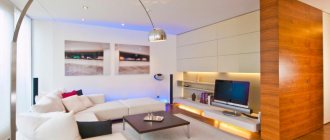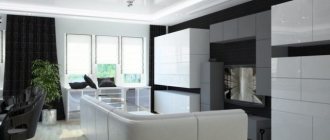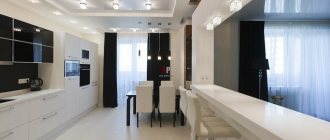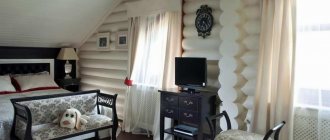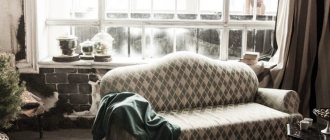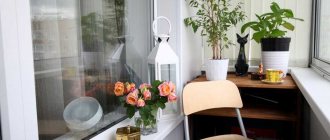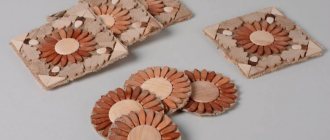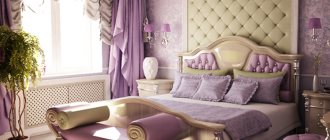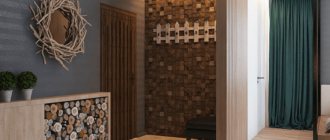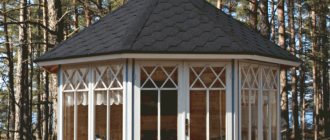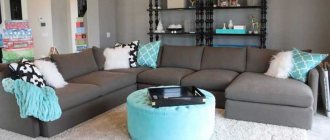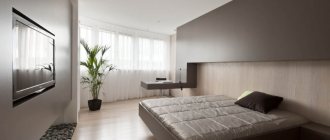Openwork gates and gates with original forged elements look quite original. Such products look really elegant and attractive. In addition, their main task - protecting the courtyard part - is successfully completed.
All the pros and cons of forged construction
Such doors complement the fences around:
- country houses;
- cottages;
- private companies;
- government agencies;
- entertainment complexes.
Among the advantages of beautiful forged gates:
- Unique details. They are forged by hand. That is why owners often order products from blacksmiths according to individual sketches and drawings, so that there are no repetitions.
- Beauty. Forged ornaments give the fence majesty, exclusivity, and emphasize the status of the owners.
- Durability. Metal protected with anti-corrosion compounds lasts up to a hundred years or more, remaining resistant to wear.
- Strength. The gates do an excellent job of protecting the property, protecting the estate from unauthorized entry.
- Compatibility with other materials. Wrought iron combines perfectly with brick or stone pillars, sections made of corrugated sheets, and polycarbonate.
- Environmental friendliness and safety of raw materials.
- Forging never goes out of fashion.
- Metal does not require special care.
Disadvantages:
- High price. Making custom gates is very expensive. If you undertake such a design yourself, you can save up to 30% of the total cost.
- Long production time. The work of a blacksmith is painstaking. It takes from 2 weeks to 1 month to produce an exclusive item based on an individual project.
At the planning stage, it is important to immediately think about which elements you can make by hand, and which are better to buy ready-made.
This is interesting: Vertical garage doors: features and varieties (25 photos)
Pros and cons of wrought iron gates
Wrought iron gates can add individuality and originality to any exterior and enhance your garden plot. The advantages of forged gates include their spectacular appearance; such gates always look rich and elegant. They also have their own individuality and uniqueness, because all products are made by hand. All gates are made according to an individual project and can have absolutely any decor and size.
Forged gates perform both protective and decorative functions
Despite their apparent fragility, wrought iron gates are very reliable and durable. They go well with various materials; the fence can be made of wood, metal, stone, brick or concrete. With such a variety of options, you can turn any design idea into reality. Forged gates will serve their owners for many years.
In combination with natural wood and stone, a forged gate will look very natural
Another advantage of all forged products is their environmental friendliness. Forging can be present on the street and in the house. Forged gates and wickets will look very harmonious with other elements: street lamps, stairs, gazebo in the garden, benches, outdoor furniture.
Due to their stability and decorativeness, wrought iron gates are one of the best options among all types of gates.
Forged gate and forged lanterns complement each other perfectly
Forged gates have much fewer disadvantages. First of all, this is the complexity of the installation process. Due to the heavy weight, it requires many workers and time to install the gate. Also, many are stopped by the high price of the product. But this is due to the fact that making one forged product is a huge amount of work for the master. However, as a result, the customer receives a real original work of art.
Some of the complexity of the installation process is also due to the fact that skill is required when installing any doors and gates
Types of forging
Forging can be done in two ways: cold and hot.
Cold
The metal is treated with special equipment without being exposed to high temperatures. Cold forging is much cheaper than hot forging, since the parts are repeated and do not have complex patterns. Doors made using this method are sold in stores. They are simply welded to the finished frame.
The most popular cold forging parts:
- Vine. Simulates a plant trunk.
- Plasticine. Rods without edges, imitation of hand molding.
- Baroque. Combined option. The details have from 4 to 8 curls, complemented by sharp peaks and petals.
- Vine shoot. Metal rods are intertwined in a spiral.
- Monogram. A figurative element resembling a dollar symbol.
- Twisted pipe. An imitation of a braided braid is performed.
- Basket. Lightweight inserts made of several thin rods intertwined with each other.
Even on simple wrought iron gates there are:
- cast clamps;
- twisted squares;
- bagels;
- peaks.
Equipment for cold forging is inexpensive. If you wish, you can rent it and learn how to work with metal.
Hot (artistic)
This is how they worked with iron blanks back in the old days. Artistic forging differs from cold forging in that metal must be forged at high temperatures. Hot raw materials are more flexible. It is easier to design different openwork compositions and patterns from it.
It is artistic forging that allows you to create compositions that have no analogues. In terms of service life, they are many times longer than those made using the cold method.
The customer can provide a sample or sketch from which the blacksmith will create a design.
Hot forging requires precision and experience from the master, since metal overexposed to fire loses strength, becomes brittle and is considered defective.
The only negative is the high price.
You will learn about the technological processes of forging methods in the article: “Forged fences for a private home.”
↑ Types of forged fences
Metal lace will not become a barrier to the penetration of the same animals, since it itself is transparent and has numerous holes. Therefore, almost all forged gates and fences are made in combination with other materials. An opaque material is placed behind the forged weave.
↑ Posts for welded and forged fences
Forged or welded sections are installed during the manufacture of a metal fence on posts made of metal or brick (stone). These are the main, most commonly used supports.
When installing a combined type of fence, when an opaque material is mounted behind a forged section, brick columns will be the best option.
Such a base is reliable and can withstand any wind, since the combined fence has a high windage.
↑ Sections with metal or profiled sheet
Often there are combinations of a forged part of the fence, behind which a painted sheet of metal is mounted. Typically profiled roofing sheets are used. It has a factory paint job designed to withstand extreme weather conditions.
In this option, the forged elements are painted black, and the color of the metal behind it is matched to the tone of the roof of the house.
But the profiled sheet has a formed relief, which, in combination with forging, not everyone likes. Therefore, a metal sheet treated with an anti-corrosion agent, primed and painted is used. This option is ideal for selecting any desired color: silver, gold, bronze and other, even unusual shades.
The combination of forged sections with metal sheets is a reliable fence. The strength of the metal sheet is reinforced by a lattice of forged elements. The composition turns out beautiful and organic. And the openwork forged bindings look impressive against a colored background.
↑ Forged sections with polycarbonate
In the last five years, wrought iron gates and fences have often been supplemented with materials such as polycarbonate. It is produced not only in cellular form, but also in sheet form. Sheet polycarbonate is more durable and can even withstand stone impacts.
Polycarbonate is available in different colors. Brown, bronze, matte white with shades are popular for fencing. Any type of material cuts well. This allows it to be used to decorate individual parts of the fence, for example, to make colored inserts.
↑ Forged sections with wood
The tree itself is both decorative and durable for creating fences. But when combined with forged elements, fences and gates turn out much more beautiful
There are two options for welded or forged fences with wood.
The first option is a forged metal frame with forged elements located. This frame is filled with boards tightly adjacent to each other. Sometimes they build only a frame around the perimeter, and patterned elements on top/bottom.
The combination of metal and wood - how beautiful and exclusive it turns out:
The second option is sections of a forged fence, which are covered with boards on the yard side. Only occasionally are boards inserted into metal frames. The difference from the first option is that the metal frame can be a fence without boards, they are only an addition.
What types of forged gates are there?
Purpose may be:
- arched;
- passing through the fence;
- closing the road;
- protecting entry and exit from the estate;
- decorative
According to the opening method, they can be swing, sliding, with a built-in or separate gate.
Swing
The most popular gate design. It is easy to install, so many owners try to assemble them themselves.
It consists of 1–2 doors, which are supported on a frame made of metal profiles, cladding material and fixed with hinges to the posts.
Due to the heavy weight, the hinges are not standard hinged ones, but reinforced bearing hinges.
The fittings used are a lock and a deadbolt. The doors open both inside and outside the yard. The gate can be built in or placed separately. Such gates are inexpensive, do not require maintenance, and last a long time.
Open manually. If desired, they are equipped with an automatic control system.
Detailed instructions for installing swing gates made of corrugated sheets.
Recoil
Suitable for small areas.
The principle of operation is to move the sash along the fence along a guide profile.
This way the car can drive as close as possible to the estate.
Sliding gates are popular not only for fencing in the private sector, but also for industrial enterprises, hangars, and workshops.
The components are the same as in the swing structure, with the exception of the presence of a sliding mechanism.
Several types of recoil system:
- rail;
- suspension;
- console.
These structures are convenient to automate and control remotely.
With built-in or free-standing gate
By design, forged gates are:
- Simple open. The door consists of straight or curved reinforcement bars. Decoration with decorative details in the form of petals and peaks is allowed. The space outside the entrance area is completely visible.
- Deaf. A steel or iron sheet is taken as a canvas and complemented with forging. The site becomes hidden from prying eyes.
- Combined. In this case, you will have to combine two materials. Forging serves as an auxiliary filler and is combined with wood, corrugated sheets, and polycarbonate.
If the gate is installed separately, the fence looks more solid. It is fixed near the gate or at a distance from it.
To save space, the gate is attached to the gate. But it is worth considering that in this case the door will have a small threshold at the bottom, which will increase the load on the supporting pillars.
Types of forged gates: design description, photos and sketches
Gates on the site can be swinging, sliding or lifting. Opening mechanism - manual or automatic. Another principle of dividing into types is based on the type of closure of the valves. Gates can be of a blind, combined or open type.
Most luxury villas do not need blind gates - their owners prefer to display the luxurious garden design for everyone to see
An open gate will never be blown away even in a hurricane wind, simply because it has minimal resistance. Silent structures have their own advantage - prying glances from others will not disturb your peace. To design forged elements, craftsmen use polycarbonate, metal sheets, profiles, and wood. Which of the following is better to use, and how to do it correctly?
Forged sliding gates with photo models
Sliding gates have a very easy to operate design. A special advantage of this type is that it saves space in front of the entrance. There is no need to leave it free, the doors do not interfere with the passage of cars and can be as wide as desired.
The system of sliding metal forged gates includes a support channel, a frame frame with internal design and a working mechanism with rollers responsible for moving the frame
The working mechanism has a catcher system for stopping the heavy frame and a plug that protects the rollers from foreign objects and debris. Such a rollback system can be automated. An electric drive is added to the mechanism, and the gate moves by pressing a button from the remote control.
Related article:
DIY sliding gates. You will find drawings, diagrams, and design sketches that will allow you to carry out installation work correctly in our publication.
Forged swing gates with photo models
Swing gates can open inside or outside the entrance. This method allows you to make doors of any shape, even the most bizarre. Typically, swing doors do not weigh that much, and strong hinges on the supporting posts are sufficient. But if the structure is large and heavy, rollers are also installed on the swing doors. Such systems are not often automated, but if necessary it is possible.
To automate swing gates, a lever or linear drive is installed
The main disadvantage of such gates appears in winter. To open them, you will have to clear the snow, otherwise the doors will not budge.
Related article:
This article will talk about swinging metal gates with a wicket . Let's look at what they are, photo examples of products, and the nuances of their installation.
Forged gates with a wicket inside with photos of models
The gate can be located separately from the entrance gate or inside it. The first option is, without a doubt, more convenient and aesthetically pleasing. Both the gate and the wicket can be designed in the same style, but the doors will be different. Look at the photo to see what a wrought iron gate with a separate wicket will look like.
Making gates with a built-in wicket requires more skill. You will have to install the frame inside the main structure, select forged elements in such a way that the entire structure looks like a solid artistic composition. Such a gate will have a threshold - this should be taken into account, especially if there are people in your family for whom the threshold can become a serious obstacle.
Advice! When planning the width of the gate, try to allow for the maximum possible distance. It will give freedom of maneuver not only for passenger cars, but also for trucks.
Wrought iron gates with polycarbonate with photo models
The combination of metal with a transparent and translucent polycarbonate surface looks very attractive. On the one hand, the design looks weightless due to the unusual background, on the other hand, it looks expensive and elegant thanks to the forging.
A slightly blurred background behind the gate visually expands the space of the site and at the same time allows sunlight to pass through, which allows you to maintain a lawn or flowerbed right behind the gate
Polycarbonate is not afraid of temperature changes, high humidity and direct sunlight. This material will reliably protect your yard from street dust, autumn leaves, and wind. Polycarbonate does not react in any way and does not contribute to the appearance of rust on forged gate patterns. Photo examples of such structures.
Important! To decorate the gate, you need to select high-quality polycarbonate with a thickness of 6 mm or more.
Designers recommend choosing a background for the fence that matches the roof of the house.
Gates made of corrugated sheets with forged elements with photo models
Corrugated sheeting as a building material is durable and has a long service life. It is based on high-quality steel. To protect against corrosion, the sheets are coated with enamel, the service life of which is up to half a century. High resistance to mechanical loads is provided by the formation of sheets with trapezoidal waves.
This material can act as a background for artistic forging. Forged gates with corrugated sheets, as in the photo, are best combined with a similar fence. It, as in the case of polycarbonate, is matched to the color of the roof of the house. The photo shows a simple forged gate with patterns and a background made of corrugated sheets.
Related article:
Do-it-yourself fence made of corrugated sheets. Photo examples, interesting solutions and installation nuances with useful tips in a separate publication on our portal.
Elements for decoration: grapes, vine, roses
Depending on the material chosen for the forged gate and the filling method, decorative patterns and elements are selected . Forged gates of elite design are ordered less often, since the materials used for this and the complexity of execution are expensive. Often individual curls and petals are used for decoration.
It is distinguished by its massive design with the use of many small decorations , with high detail. Often the arrangement of patterns or individual repeating elements can be asymmetrical .
Gate, wicket and fence with grapes, vines and leaves. Photo Iron Age
Using a vine with leaves for decoration looks very natural. Such forged elements contribute to the impression that the gate is “alive”.
Important. Such ornaments are made by hand, since detailed detailing is extremely rarely achieved during factory forging.
The number of pattern options for decorating forged gates today appears to be more than a hundred variations. Each of these elements takes its history from a separate master of a certain time. Many styles use flowers and their petals. Such products are very difficult to make, but they look beautiful and fascinating .
Advantages of gates with forging elements
Today, there are many varieties of forged structures that differ in their structure. What they all have in common is that they have certain advantages as well as disadvantages. Let's consider what advantages forged products have.
Wrought iron gates are quite versatile, so they go well with different styles.
First of all, it is worth noting that such fences are highly versatile. They look beautiful in combination with any stylistic design of suburban areas. They are often combined with various materials. Photos of gates made of corrugated sheets with forged elements, as well as polycarbonate fences, allow you to appreciate their advantages. Such structures look presentable and also protect the area from prying eyes.
Another advantage of such products is that they do not require special care. The variety of different solutions, designed in different styles, makes it easy to find the necessary option that will be combined with the characteristics of a particular site. It is recommended to pay attention to the photos of iron gates with different patterns. Before purchasing this design, you need to decide on the desired type of entrance.
One of the advantages of gates is that they are easy to care for.
Note! In order to emphasize the originality of your site, you can place an order for gates according to an individual sketch. In this case, you yourself will be able to choose the pattern, color, as well as additional elements that will be used in assembling such a product.
In addition to simple drawings, there is a possibility of decorating the gate with complex elements. Metal flowers, birds and a wide variety of other options - all this can be done on such a fence. However, this will certainly affect the cost of custom wrought iron gates.
Wrought iron gates can be made to order of the required size and design
Manufacturing Features
The thickness of the material should not exceed 1 mm. The cross-section of the tetrahedron is approximately 12-14 mm, nothing more. Such parameters are considered optimal for an attractive appearance and the ability to carry out installation work independently.
Note! In order for the product manufacturing process to go well, you should determine the amount of material in advance.
It is important to calculate the material you need for all elements and add about 30%. This is the number of sheet metal that will be needed in further work.
Beautiful wrought iron gates consist of several elements. This is the frame part, which is basic; the rigidity and shape of the product depends on it. The set of metal elements makes up the installation part. This is what is needed to secure the posts and gates during the installation process.
One of the key elements is awnings. The mechanism can be opened and closed using a lock or latch.
Unique patterns and forging elements provide rigidity to the fence and give the product an original appearance. To protect against vibrations, owners should consider installing them on strong, reliable pillars.
Principle of operation
Sliding gates consist of a frame, a steel leaf, a guide profile, two supporting carriages, a limiter (upper or lower) and an electric drive. The operating principle of such shutters is to move the entire structure along the fence section along guides. Thus, this product allows you to minimize the amount of used free space on the site. The following video will clearly show how it works.
Sliding or swinging? What's better? Advantages of sliding structures
- Sliding gates are more resistant to wind loads than swing gates.
- They are also limited by the minimum opening-closing working area , and for swing structures, the free space is determined by the length of each of the sashes.
- In addition, sliding gates are more reliable in terms of security .
- And, due to the fact that sliding structures with an automatic opening system have an order of magnitude fewer components than swing ones, this greatly simplifies their installation and subsequent maintenance work.
Spiral rods
The peak is mounted on a spiral tetrahedron. It's not difficult to make them yourself.
Cut a tetrahedron of a certain size. Place the vice on a workpiece with a width of 10 cm. Along the line where the spiral will begin, firmly clamp the tetrahedron in the vice. Use a vise to clamp the tetrahedron at the end of the spiral. By rotating the pattern vice along the axis of the tetrahedron, you create a spiral. Take the spiral out of the vice and straighten it.
Be sure to count the number of complete turns, otherwise your elements will be asymmetrical. One full turn is equal to one turn on the tetrahedron.
Schemes and drawings
The valve diagram shows the location of all elements and their sizes. The consumption of materials and cost are indicated. The method of opening (inside or outside the yard) and the presence of automation are taken into account.
There are a huge number of options for decorative elements that are used in the production of forged sashes. Each owner makes a choice according to his own taste.
Main features of forged gates: photos and characteristics
Forged structures harmoniously combine qualities such as functionality and aesthetics. They can be assembled from various materials. However, regardless of what components are included in such a fence, all structures are highly durable and perform an excellent job of protective functions.
Wrought iron gates are divided into different types according to their purpose.
Buying or independently assembling forged gates is, first of all, a chance to show your taste. The variety of patterns contributes to the great popularity of these designs. Each person can choose a design they like and order a product or try to make it themselves. Photos of beautiful forged gates make it possible to visually evaluate their advantages.
Note! Before you buy a forged structure, you need to remember that it will require the construction of reliable supporting elements. This is due to the fact that such gates are made of metal and are heavy.
Forged structures come in a wide variety of patterns.
The mass of such structures is, perhaps, their main disadvantage. This also complicates their independent production. Mistakes made when drawing up a project for inexpensive wrought-iron gates are fraught with serious consequences, so to prevent them you need to know how a sketch is drawn up. The drawing of the future metal structure must contain the following elements:
- frame;
- fixation products;
- decorative details;
- awnings;
- locking devices.
One of the main disadvantages of wrought iron gates is their heavy weight.
In addition to the mandatory image of all elements, it is also required to indicate their dimensions in the diagram. The choice of the geometric shape of the valves depends on the financial capabilities of the owners and their personal preferences. For example, you can choose ordinary rectangular sashes, the organization of which is not difficult. Figured elements are reflected in the final cost of the gate.
Photo gallery of design styles
Below are photos of forged fences decorated in different design directions.
Modern
Smooth lines predominate. There is an asymmetrical pattern.
A characteristic feature is plant and animal motifs in the form of flower stems, images of eagles, swans.
The elements are simple and airy.
Loft
This style is characterized by a minimum of details, which are created with little artistic roughness, without additional polishing and achieving ideal forms. Often these include straight lines, sharp angles and contrasting colors.
Baroque
This is a solemn and majestic style. The gates are decorated with many spirals, curls or various ornaments. The pattern starts from the center, smoothly moving to the edges. The rods intersect each other, forming curls. The elements are created as airy. An excellent option for combining black, brown and gold colors.
Chalet
Chalet-style forging symbolizes rural culture, so the elements are selected as simple and noble as possible. The main thing is not to overdo it with quantity.
High tech
Modern design direction, restraint of lines and practicality of every detail.
Forging is combined with innovative materials (polymers, metal alloys). Forms are strict and businesslike. No pomposity or airiness. lack of plant and other ornaments.
Provence
Light romantic style. Painting is done in delicate light shades. Small floral motifs and plant stems that run through the entire door leaf are welcome here.
Gothic
Decoration is done in black and tones close to it. This is the geometry of the patterns. All details rush upward.
Typical Gothic elements are thorns, sharp tips, peaks, trefoils.
If the owners want their gate to be different from its neighbors, memorable and impressive with its originality, then choosing forged structures will be the right decision. With certain skills and tools, you can make simple malleable elements yourself. If you do not have such skills, then it is better to order the gate from specialists.
Material calculation
Selecting a sketch is the first and most mandatory step. You can find a ready-made one (photo, sketch from the Internet) or make it yourself. And only then buy the necessary material. This will save you from mistakes and incorrect calculations.
First we need the size of the opening. Divide the width by a factor of 1.60 and you will get the optimal height. For gates with a curved shape at the top, calculate the area at the top point of the bend.
You will find the cost of the material by multiplying the area and the cost of 1 m2 of the selected canvas.
A good pipe is a square profile. The material for the base rods should be thicker, and a square rod with a small cross-section is suitable for small curls, strips of 12x6 mm are suitable for baroque curls.
The working process
When you have purchased the required amount of material, you should start with the basics, the features of how to make such a product yourself.
Please note that metal elements increase in parameters after the main work is completed. This can be explained by the following steps. It is important to anneal the material, heat it to the required temperature, then cool it. After such manipulations, the material will be quite easy to work with; it becomes pliable in the hands of even a novice master.
To ensure that the pillars do not sag, it is worth installing not only metal elements, but also connecting them with facing bricks. In the latter case, it is important to pay attention to the pipe cover. The depth of the pit should not be less than 1 m.
The posts should be placed in a hole, then covered with crushed stone. When placing them, pay attention to perpendicularity. A discrepancy may result in the design looking “skewed.”
Cement mortar is used in proportion to 1 to 3. That is, one part cement and three parts sand, which is suitable for M300.
After compaction, check the evenness of the pillars. When the solution is completely dry, then you can lay out the brick.
Advantages of forged gates
Durability . Metal products will last at least 25 years. If you care for them properly, they can easily last more than 50 years. Variety of colorful shapes. On the market you can choose a model for any design - for example, a gate with metal daisies or with openwork elements.
Easy to care for . It is necessary to remove dirt from the metal surface from time to time. This can be done with a simple slightly damp cloth, or you can use detergents with an aggressive chemical composition. To increase the service life of the decor, update the protective coating in a timely manner.
Resistance to negative influences . Metal elements are not afraid of exposure to moisture and water, strong impacts and constant static load. They do not fade in the sun and do not darken over time.
Easy combination with other materials . Wrought iron gates can be easily combined with stone, brick, wood, ceramics and many other materials.
Curly sashes
Elements should be laid out on a flat surface. Over 2 meters is best. The building level is useful for obtaining a plane.
As you can see in the photo of the forged gate, a post is cut out of the profile on the top part. Place the part on the welding table, making sure the corner parts are equal.
Note! To obtain the correct shapes, it is necessary to pay attention to measuring the diagonal before starting welding work. Craftsmen use nylon thread for these purposes.
We carry out forging of garage doors
Tools for work and materials
Without this kit you will not be able to start making wrought iron garage doors. In order for everything to be correct, please be patient and have the following set of tools:
- Several hammers of different sizes.
- Forceps.
A furnace or forge for heating metal.- Vise for fixation.
- A device with which you will grind metal.
- A hacksaw (preferably with an electric drive) or a grinder.
- Welding machine.
- Marker/pencil, building level, tape measure.
- Hinges that can withstand heavy loads.
If we talk about materials, then you need the following:
- Sheet steel blanks.
- Steel round billets and pipe cuttings.
- Reinforcing bars.
- Profile metal with a cross section of 1*1 cm.
What to do before work?
When all the materials and fixtures are ready and assembled, you should measure the garage opening to accurately determine the size of the future gate. Everything must be done exactly according to the instructions and double-checked more than once. If you have all the measurements, you can even make a drawing, which will include sketches or sketches of the gate and patterns on it, as well as the method of fastening and exact dimensions.
Life hack: if you are not a master at drawing, it is better to use photographs, sketches and drawings that are available on the Internet and made by professionals.
Instructions for creating a forged garage door with your own hands
To make a forged metal garage door, you will need to strictly follow these instructions:
- First, according to the instructions, we make a frame or frame. To do this, you can use a steel profile, which must be adjusted to size and laid on a flat surface. Next, you need to align the elements to the building level and check the diagonals. The profiles at the corners should be secured by welding.
- After this, you need to assemble the gate leaves. The shutters should fit into the frame you have already made and have a small gap, approximately 0.1 cm.
- Next, we cut the metal sheets into sheets of the required size and lay them on the finished frame. Now you need to weld everything around the perimeter. Be sure to make the seam continuous.
- It remains to weld the lower hinge elements in the designated places to the frame, but the moving elements should be fixed on the outer part of the sashes.
- Once the main work is completed, you can install the lock, latches and handles. You can use reinforcement as a deadbolt.
- And finally all that remains is to make a hole in the floor.
Now everything is ready, but this only applies to the gate. At this stage you have a simple, banal design. But after that comes the main part - forging and installation.
We create decorative patterns
Decorating a wrought iron garage door is not difficult, but making elements for decoration is not so easy. You will need to be careful and follow safety precautions, since we are talking about hot metal and open fire. To do this, use eye glasses (protective) and fire-resistant gloves.
The technology is simple:
- Collect tetrahedral rods, which we cut with a grinder or hacksaw to fit the size you need.
- Place them in a forge or oven so they can heat up to a bright red hue. This is called "hot forging"
- Afterwards, the twigs should be pulled out with tweezers and started forging. Place the rod on the anvil and hit it in the right place until the decorative element takes the required shape, for example, a petal, a curl, and so on.
- When working with thick rods, it is important to use a vice. This is already considered cold forging. The workpiece should be fixed inside, and then, thanks to bending, given the required shape.
- This way you can make parts for wrought iron garage doors. They can be anything, or depict a specific design.
How to apply patterns on gates?
When everything is ready, you can start fixing the elements on the gate. To do this, you will need to make markings with a marker or pencil so that everything is neat and even. Using this figure, you can begin installing forged elements in the marked positions. Now all that remains is to weld everything to the panel. Make sure that the products do not move out of position during installation.
Please note that you can install one element at a time, or grab several parts at once by welding. Thanks to this trick, you will eliminate any mobility, and all that remains is to weld everything to the end.
When the drawing is completely formed, you can put the gate in order. Clean the seams from slag and smooth it out with a grinder so that everything is beautiful. To protect a metal fence, use a special primer to treat the surface. The last stage is painting and installation in place.
